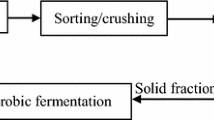Abstract
The problems with odor around a typical edible oil deodorizer are discussed in detail, and a three-step solution to eliminate these problems is presented. The three steps are a distillate recovery system which recovers most of the fatty acid in the deodorizer vapor discharge as a valuable byproduct, a closed loop barometric cooling water system which keeps the fatladen hotwell water out of the cooling tower by recirculating it back to the vacuum system after cooling with tower water in a heat exchanger, and a vapor scrubbing system to eliminate volatile organic compounds which are not removed in the previous two steps.
Similar content being viewed by others
References
General Mills advertisement, JAOCS 54:53A (1977).
Brandt, P.E., and B. Horndrup-Jensen, Ibid. 52:278 (1975).]
Ross, R.P., CEP 68(8):59 (1972).
Author information
Authors and Affiliations
About this article
Cite this article
Gilbert, W.J., Tandy, D.C. Odor control in edible oil processing. J Am Oil Chem Soc 56, A654–A658 (1979). https://doi.org/10.1007/BF02676388
Received:
Issue Date:
DOI: https://doi.org/10.1007/BF02676388




